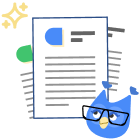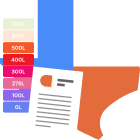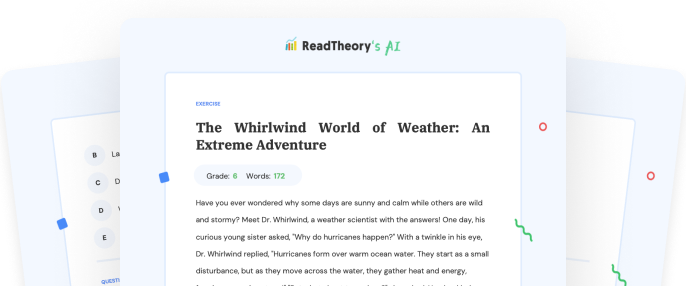Transform Your Teaching
with AI-Powered Worksheets
With ReadTheory’s Instant Worksheet Builder, you can create engaging, grade-appropriate worksheets tailored to your students in minutes. Spark curiosity, save time, and empower critical thinking with AI-powered tools designed for teachers like you.


Navigating with Text Features: Your Map to Understanding Non-Fiction
Imagine you’re on a treasure hunt. Instead of using a map to find the treasure, you are given a long, complicated description of the location. Difficult, isn't it? Now imagine if you had clear signs or markers to guide you along. Easier, right? In the world of reading, especially non-fiction, these guiding signs are known as 'text features'. Text features include elements like headings, subheadings, captions, bullet points, and diagrams used to organize and highlight important information in a text. Consider Amy, an 8th grader studying for her science test. Without understanding text features, she could be lost in a sea of words. But with knowledge of text features, Amy can quickly navigate to the specific section she wants to study, saving time and improving comprehension. Just like a map makes traveling easier, text features make navigating through a complex text a breeze. They help us identify important information, understand the structure of the text, and improve our overall reading strategy. So next time you pick up a non-fiction book, pay attention to these helpful guides. They are your map to understanding and appreciating the text better!
Question 1
What are 'text features' in non-fiction reading?
They are maps for finding treasure
They are long, complicated descriptions
They are elements like headings, subheadings, captions, bullet points, and diagrams used to organize and highlight important information
They are signs that guide you along a journey
They are pages in a book
Question 2
How do text features improve reading comprehension?
By making the text more complicated
By adding more words to read
By identifying important information and understanding the structure of the text
By making the text longer
By adding color to the text
Question 3
Who is Amy and what is her connection to the text features?
Amy is a non-fiction book
Amy is a map to a treasure
Amy is an 8th grader who uses text features to navigate through her study material
Amy is a sign on the road
Amy is a science test
Question 4
What are the benefits of using text features?
They make the text more difficult
They add unnecessary details to the text
They make the text look cool
They help to identify important information, understand the structure of the text and improve overall reading strategy
They make the text look longer
Question 5
What should you do next time you pick up a non-fiction book?
Ignore the text features
Only read the headings and captions
Pay attention to the text features
Only read the diagrams and bullet points
Skip the subheadings
 or share via
or share via

Assign the ReadTheory pretest to determine students' reading levels.

Why Teachers Love
Instant Worksheet Builder?

Tailored Content for Every Student
Craft worksheets with passages and multiple-choice questions customized to your chosen topic and grade level, ensuring relevance and engagement.

Save Hours
of Prep Time
Our AI, Lexi, generates complete worksheets—passages, questions, and answers—in minutes, freeing you to focus on teaching, not planning.

Standards-Aligned Learning
Every worksheet is designed to boost reading comprehension and critical thinking, aligning seamlessly with State Standards to help your students shine.
Personalized teaching
for personalized learning
Browse worksheets created and refined by educators using Lexi—your source for inspiration and ready-to-use resources.


ReadTheory is free for Teachers to use.
Join thousands of educators using ReadTheory for free. Sign up today and start creating in just minutes!





